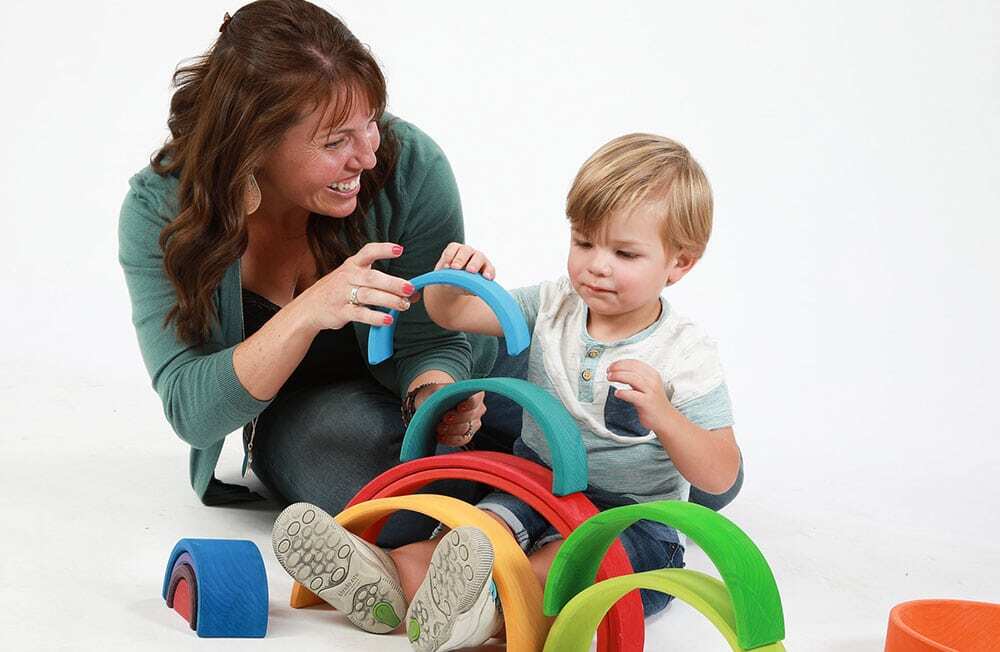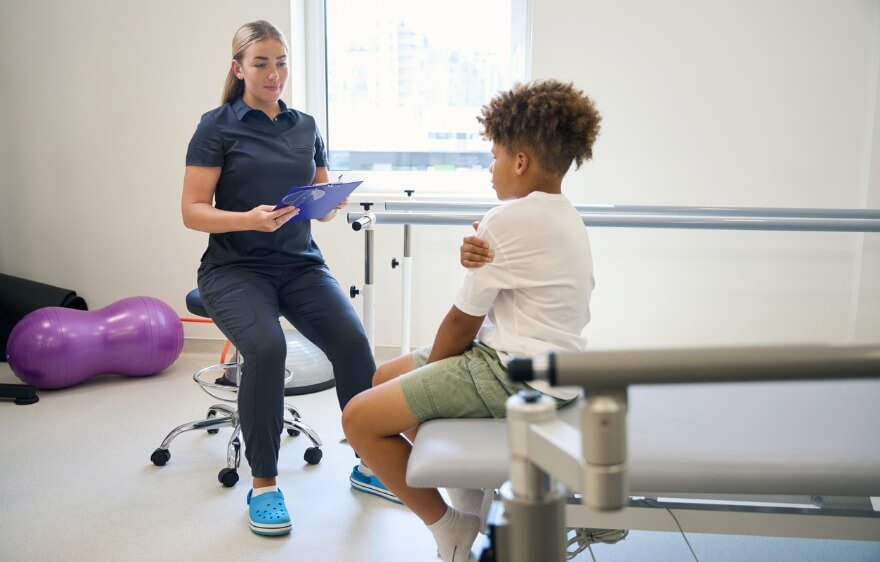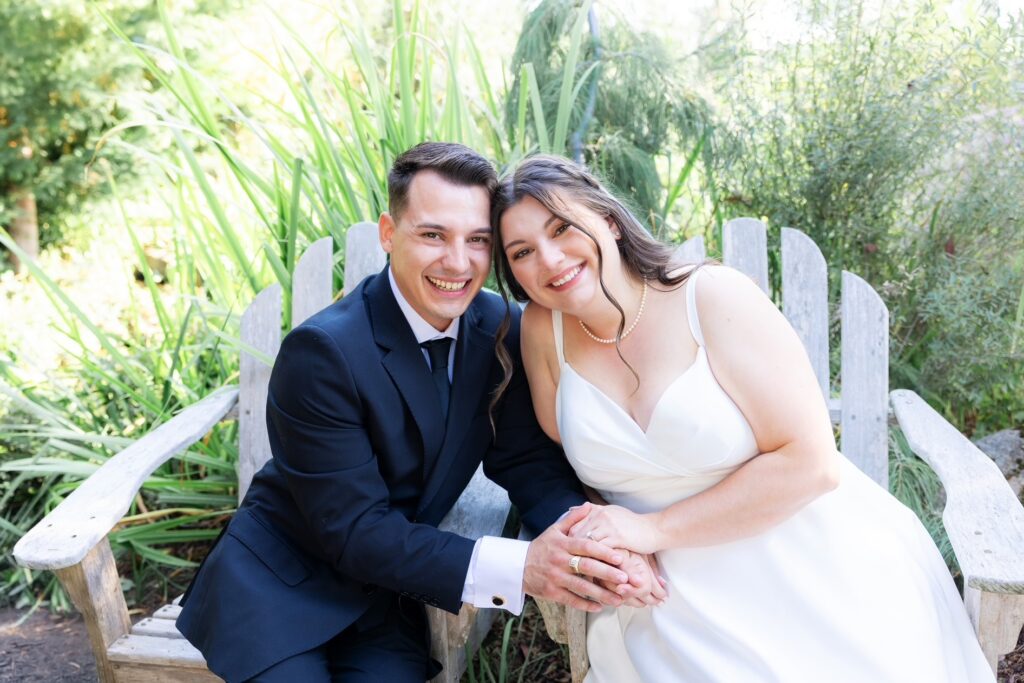As a parent, there’s nothing more satisfying than watching your little one grow and begin to reach new milestones. And whether it’s crawling, walking, running, jumping, or even climbing, you’re seeing gross motor skills in action. For every child, gross motor skills are fundamental for gaining independence, improving coordination, and building confidence in movement.
Whether you are a new parent or have several little ones already, understanding how to foster these skills in infants and toddlers will support their overall physical and cognitive development. In this guide, we’ll explore what gross motor skills are, the developmental milestones to watch for, and share practical activities that can support your child’s growth.
What Are Gross Motor Skills?
Gross motor skills involve any movement that uses the large muscles in the body. These skills are foundational for a child’s overall motor development and are required for activities like walking, running, hopping, throwing, and balancing. Essentially, gross motor skills allow children to interact with their environment and navigate the world around them.
These skills are developed gradually over time, often beginning with the earliest baby movements like head control and progressing to running and jumping as a child matures. The development of these skills helps a child build the strength, coordination, and balance they need to perform complex actions with ease as they get older.
For parents, understanding gross motor skills and their milestones can be crucial for encouraging healthy development. It can also help you know when to seek help from a pediatric professional, like a physical therapist (PT) or occupational therapist, if you see your child struggling to meet expected milestones.
Developmental Milestones for Gross Motor Skills
From birth through early childhood, your child’s gross motor development will follow a general sequence of milestones, although the age at which each milestone occurs can vary from child to child. Here are some key stages:
Infancy (Birth to 12 months):
- 0–2 months: Newborns have little control over their muscles, so they may only be able to move their arms and legs reflexively. Tummy time during this stage helps babies strengthen neck muscles, which is vital for developing head control.
- 2–4 months: Babies begin to lift their heads while on their tummies and start to roll over from their stomach to their back. They also start to push themselves up with their arms.
- 4–6 months: By this age, babies can usually sit up with support and may start to crawl or scoot on their bellies. They begin to reach for objects and bring them to their mouths.
- 6–9 months: Babies develop the ability to sit independently and may start to crawl on their hands and knees.
- 9–12 months: Babies may pull themselves up to a standing position and cruise along furniture. They may also take their first steps during this period.
Toddlerhood (1–3 years):
- 12–18 months: Around this age, children may take their first independent steps. They begin to squat, bend, and rise without assistance. Walking becomes more stable, and some toddlers begin to climb.
- 18–24 months: Toddlers start running, climbing, and kicking a ball. Their balance improves, and they are more confident in their movements.
- 2–3 years: By the age of three, many children can jump with both feet, balance on one foot for a short time, and begin to pedal a tricycle. They may also start throwing and catching a ball.
Understanding these milestones helps parents track their child’s physical development and recognize any delays that may need attention.
Gross Motor Skills Activities for Infants
From birth to 12 months, your baby’s body is learning to grow stronger, and their brain is making connections that support motor function. As parents and caregivers, your involvement in their physical activity is crucial to their development. Here are several simple and fun activities you can do with your infant to promote the development of gross motor skills:
Tummy Time
Tummy time is one of the most important activities for babies from birth to around 6 months. It helps strengthen neck, back, and shoulder muscles. Start by placing your baby on their tummy for short periods while they’re awake and supervised. Gradually increase tummy time as they grow stronger. You can make tummy time more engaging by placing toys just out of reach to encourage reaching and turning their head.
Rolling Over
Encourage your baby to roll over by gently guiding them. Start by laying your baby on their back and slowly bringing a toy from one side of their body to the other, coaxing them to roll. This helps build core strength and coordination.
Reaching and Grasping
Hold toys or objects just out of your baby’s reach to encourage them to stretch, grasp, and roll onto their side or tummy. These activities build hand-eye coordination and strengthen arm and shoulder muscles.
Supported Sitting
Once your baby is ready, try helping them sit upright while supporting them with pillows or your hands. Sitting up helps strengthen the muscles needed for later milestones like crawling and walking.
Standing with Assistance
By nine months, many babies are eager to stand. Encourage this by holding their hands and gently helping them pull to a standing position. This supports leg strength and balance.
Gross Motor Skills Activities for Toddlers
Once your baby turns one, their curiosity and independence grow, making this an exciting time to support their gross motor development through fun activities. Here are more ideas to engage your toddler in physical activity while helping them improve their motor skills:
Climbing
Children love to climb, whether it’s on furniture, stairs, or even a soft play structure. Provide safe climbing opportunities, like a small indoor slide or soft cushions. Climbing helps strengthen their legs and core muscles.
Walking and Running
Once your toddler starts walking, create an obstacle course with soft objects like pillows to encourage them to navigate and balance. Let them explore different textures and surfaces, which will improve their walking and running skills.
Dancing
Turn on some fun music and encourage your toddler to move, sway, or bounce along. Dancing is a great way to improve balance, coordination, and rhythm. You can even play a game of freeze dance, where they freeze when the music stops.
Playing with Balls
Toddlers love playing with balls! You can start by rolling the ball back and forth, then progress to tossing and catching. Playing with a ball helps develop hand-eye coordination, strength, and agility.
Push Toys
Push toys such as a toy stroller, shopping cart, or even a toy lawnmower help improve walking and balance. As your toddler pushes these toys around, they are building their muscle strength and developing coordination.
Jumping and Hopping
Once your toddler is stable on their feet, encourage jumping! Start by showing them how to jump with both feet off the ground. After some practice, toddlers will develop better balance and coordination as they begin jumping on their own.
Walking in Nature
Take your toddler outside and explore a park or a safe natural area. Walking on different surfaces like grass, sand, or gravel will help develop their balance and stability. Plus, the fresh air and new sights will make the experience even more engaging.
How Pediatric Physical Therapy Helps With Gross Motor Skills Development
While most children will meet their gross motor milestones naturally, some children may experience delays or challenges that require support. Pediatric physical therapy (PT) can be incredibly beneficial for children who need additional help in reaching their gross motor development goals.
A pediatric PT specializes in assessing, diagnosing, and treating physical and motor skill delays in children. They use a variety of play-based exercises and activities tailored to your child’s specific needs to help them develop strength, balance, coordination, and mobility.
Some ways pediatric PT can support your child’s gross motor development include:
- Creating personalized plans: Based on a thorough evaluation of your child’s motor skills, a pediatric PT will develop an individualized treatment plan to address any delays or challenges.
- Building strength and coordination: Pediatric PT focuses on exercises that promote strength, mobility, and coordination through fun activities that engage your child’s interest.
- Improving balance and stability: If your child has trouble with balance or experiences frequent falls, a PT will provide targeted exercises to improve these areas.
- Educating parents and caregivers: Physical therapists work closely with parents and caregivers, offering strategies, activities, and tips that can be incorporated into daily routines to promote your child’s motor development.
Early intervention through pediatric physical therapy can help children make significant strides in their gross motor development, often helping them catch up with their peers or meet developmental milestones at their own pace.
Helping Your Little One Grow and Thrive
Supporting your child’s gross motor skills development can be a fun, rewarding experience for both of you. By understanding developmental milestones, engaging in activities that promote physical growth, and seeking professional help if needed, you can help your child build the foundation they need to thrive physically and emotionally. Whether you are rolling on the floor with an infant or cheering on your toddler as they take their first steps, remember that every moment of movement counts toward their growth and well-being.
Schedule Your Child’s Care Assessment Today
At Care Options for Kids, we understand the unique challenges of caring for a child with health conditions. Our dedicated team of pediatric home health nurses is here to support your family with compassionate, expert care tailored to your child’s needs. Contact us today to schedule an assessment and learn how we can help you navigate this journey with confidence and care.
Click here to start your journey to better care.
This post is for educational and informational purposes only. You should always speak with your own therapist before implementing this information on your own.






